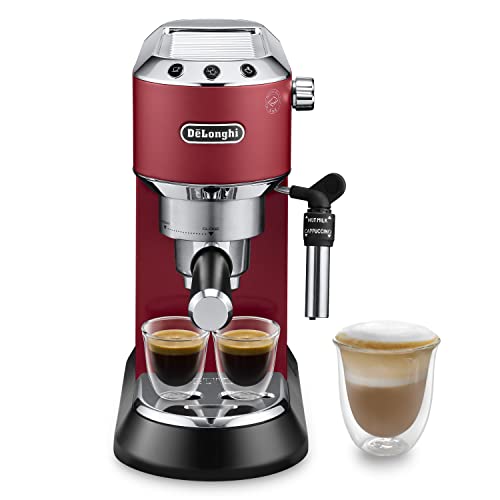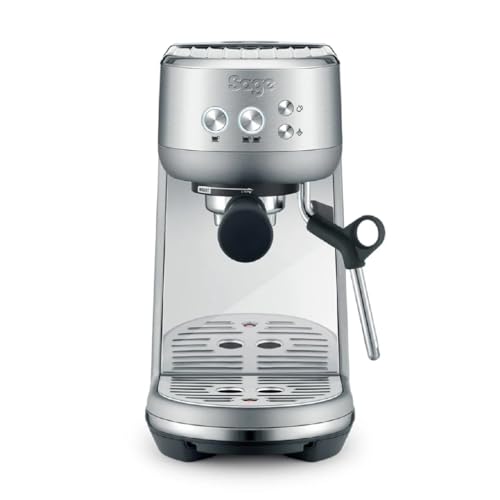Best Espresso Machines: A Comprehensive Guide
Espresso machines have become a staple in coffee culture, attracting enthusiasts and casual drinkers alike. The best shot of espresso can raise the coffee experience, and selecting the ideal machine is essential for accomplishing this objective. This post explores the world of espresso machines, checking out a few of the very best alternatives available on the market today. It will cover the kinds of machines, crucial functions to consider, a comparison table, and frequently asked questions.
Types of Espresso Machines
Before venturing into particular products, it's important to understand the various types of espresso machines available:
Manual Machines: Also called lever machines, these require the user to manually manage the pressure and circulation of water. They use a hands-on experience but need more skill.
Semi-Automatic Machines: These machines automate the pressure and temperature, while allowing users to control the shot timing. They are ideal for those who wish to take control without requiring too much effort.
Automatic Machines: These gadgets automate the brewing procedure totally; users just pick the size and strength of the shot. Great for newbies.
Super-Automatic Machines: This type grinds the beans, tamps, brews, and even froths milk immediately. They're excellent for benefit, making them ideal for those who desire speed without compromising quality.
Capsule Machines: Utilizing pre-packaged coffee pods, these are the simplest machines for making espresso. While convenient, they frequently do not have the depth of flavor found in newly ground beans.

Key Features to Consider
When looking for the very best espresso machine, a number of crucial features must guide your choice:
Pressure: The ideal pressure for an espresso machine is 9 bars. This pressure is essential for drawing out flavors effectively.
Temperature level Control: Consistent water temperature is essential for a good mini espresso maker (fix.mudanauto.Com). Look for machines with PID (Proportional Integral Derivative) temperature control.
Construct Quality: Machines made from high-quality products tend to last longer and provide a much better experience.
Size and Footprint: Consider your available counter area. Some machines are compact, while others need substantial space.
Grinder Quality: An integrated grinder provides convenience, however the quality of the grinder impacts the last taste. Doser or doserless types alter the taste profile considerably.
Ease of Use and Cleaning: Consider how simple the machine is to clean and maintain. Machines with removable parts usually provide much easier cleaning.

Comparison Table of Best Espresso Machines
Here's a contrast table showcasing a few of the most suggested espresso machines based on numerous user reviews and skilled scores:
| Espresso Machine | Type | Pressure (Bars) | PID Control | Grinder Type | Price Range |
|---|---|---|---|---|---|
| Breville Barista Express | Semi-Automatic | 9 | Yes | Cone-shaped burr grinder | ₤ 600 - ₤ 700 |
| De'Longhi EC155 | Manual | 15 | No | No grinder | ₤ 100 - ₤ 150 |
| Rancilio Silvia | Semi-Automatic | 9 | No | No grinder | ₤ 700 - ₤ 800 |
| Saeco Xelsis | Super-Automatic | 15 | Yes | Integrated grinder | ₤ 1,000 - ₤ 1,500 |
| Nespresso VertuoPlus | Pill | N/A | No | No grinder | ₤ 150 - ₤ 200 |
| Gaggia Classic Pro | Semi-Automatic | 9 | Yes | No grinder | ₤ 400 - ₤ 500 |
Summary of Best Espresso Machines
- For Beginners: The De'Longhi EC155 is an excellent starting point due to its affordable cost and ease of use.
- For Serious Enthusiasts: The Rancilio Silvia offers a balance in between quality and control, attracting those who wish to improve their barista abilities.
- For Convenience: The Saeco Xelsis stands apart as a top super-automatic alternative, perfect for users looking for optimum ease without compromising taste.
Frequently Asked Questions (FAQs)
Q1: What is the best pressure for drawing out espresso?A1: The perfect pressure is 9 bars; this pressure level is optimum for drawing out the tastes in espresso.
Q2: How typically should I clean my espresso machine?A2: Regular cleaning is vital. For machines with built-in mills, it is best to clean them after every use. Deep cleaning should be done weekly or monthly depending on usage and model.
Q3: Can I use regular coffee in an espresso machine?A3: Espresso is made from finely ground coffee, preferably roasted particularly for espresso. While you can use regular coffee, the taste and extraction might vary.
Q4: How long can my espresso machine last?A4: With proper care and upkeep, a high-quality espresso machine can last a number of years, even decades.
Q5: What grinder should I use for espresso?A5: A burr grinder is more effective, as it offers consistent grind size which is vital for proper extraction.
The journey to finding the very best espresso machine can be an interesting one, filled with discovery and potential for establishing one's coffee palate. Whether selecting the simpleness of a pill machine or the control of a manual design, understanding the various types and functions can significantly boost the experience. With advances in technology and development, there's an ideal espresso machine for all choices and ability levels on the marketplace today. Purchasing the ideal machine not just promises excellent taste but also elevates the overall coffee experience.
